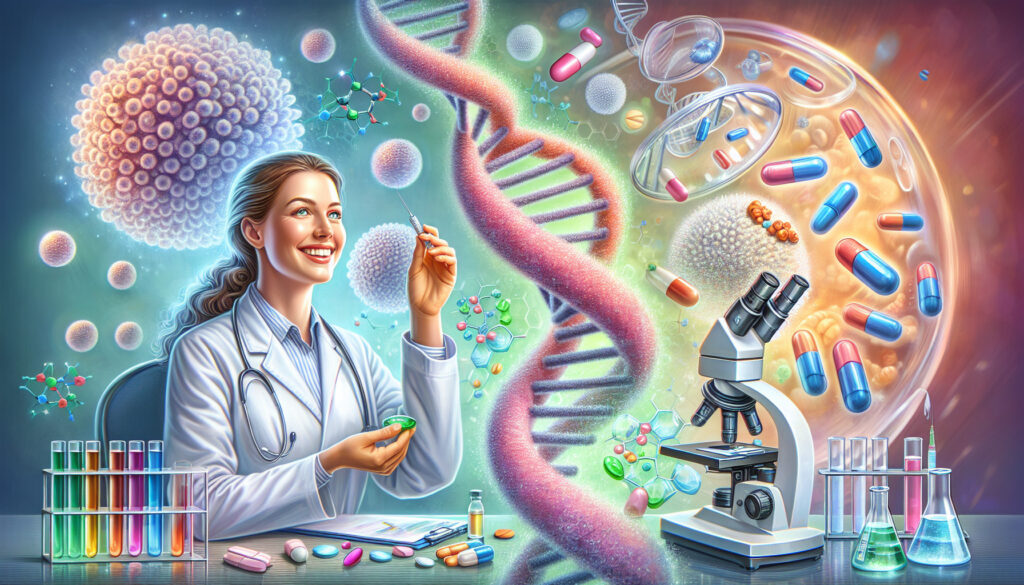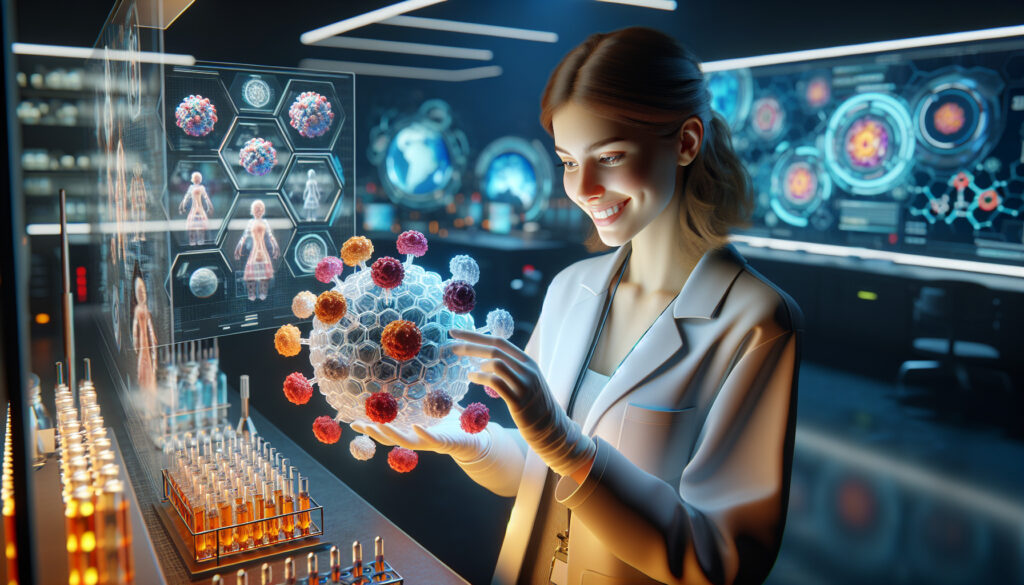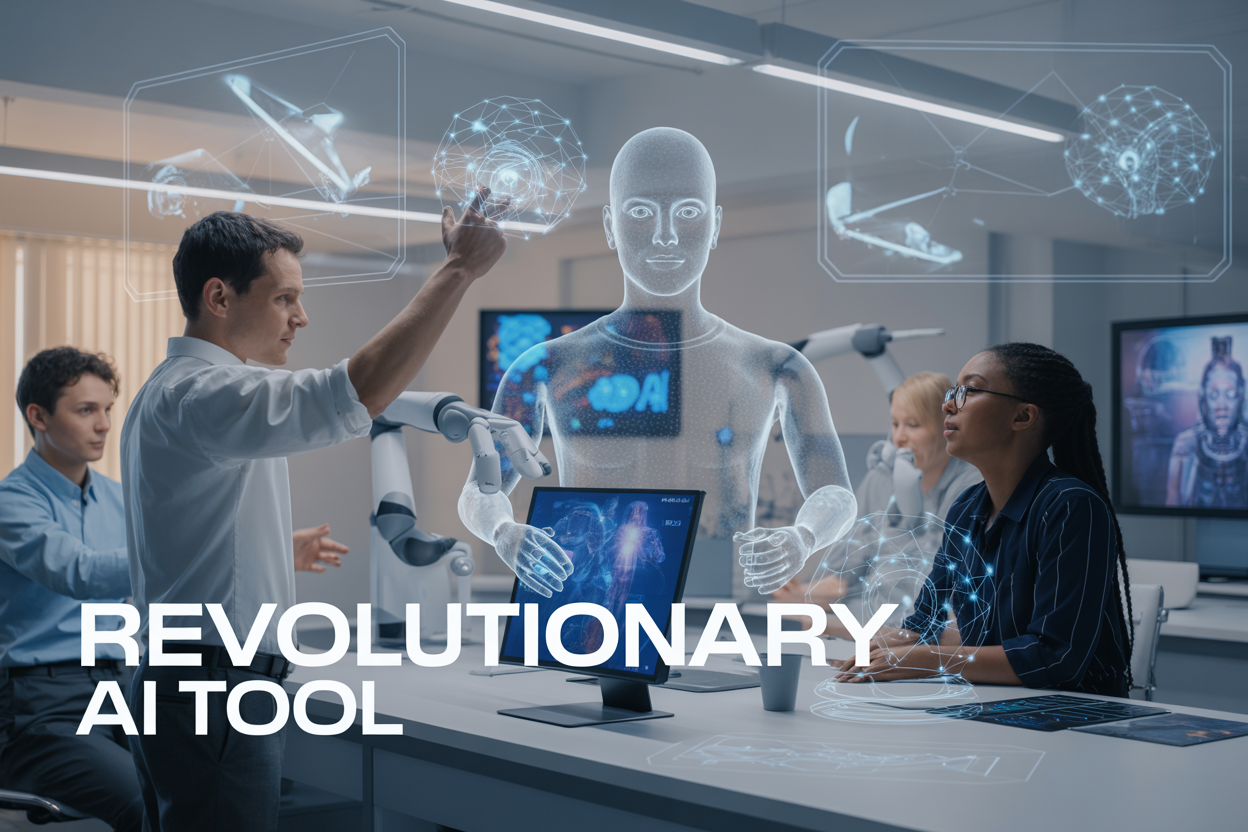
Artificial intelligence has exploded from simple calculators into creative geniuses that paint masterpieces, write scripts, and make complex decisions independently. This revolutionary AI tool guide is for business leaders, tech enthusiasts, and professionals who want to understand how AI has transformed from basic rule-following systems into intelligent partners that can work alongside humans.
We’ll explore the incredible evolution from basic rule-following to intelligent decision-making that lets AI adapt and learn without constant human input. You’ll discover how creative AI technology now produces stunning art and content that sells for hundreds of thousands of dollars at major auction houses. We’ll also examine the natural language processing breakthroughs that made talking to machines as normal as chatting with a friend, plus how autonomous AI agents can now set their own goals and execute complex tasks while you sleep.
Evolution from Basic Rule-Following to Intelligent Decision-Making
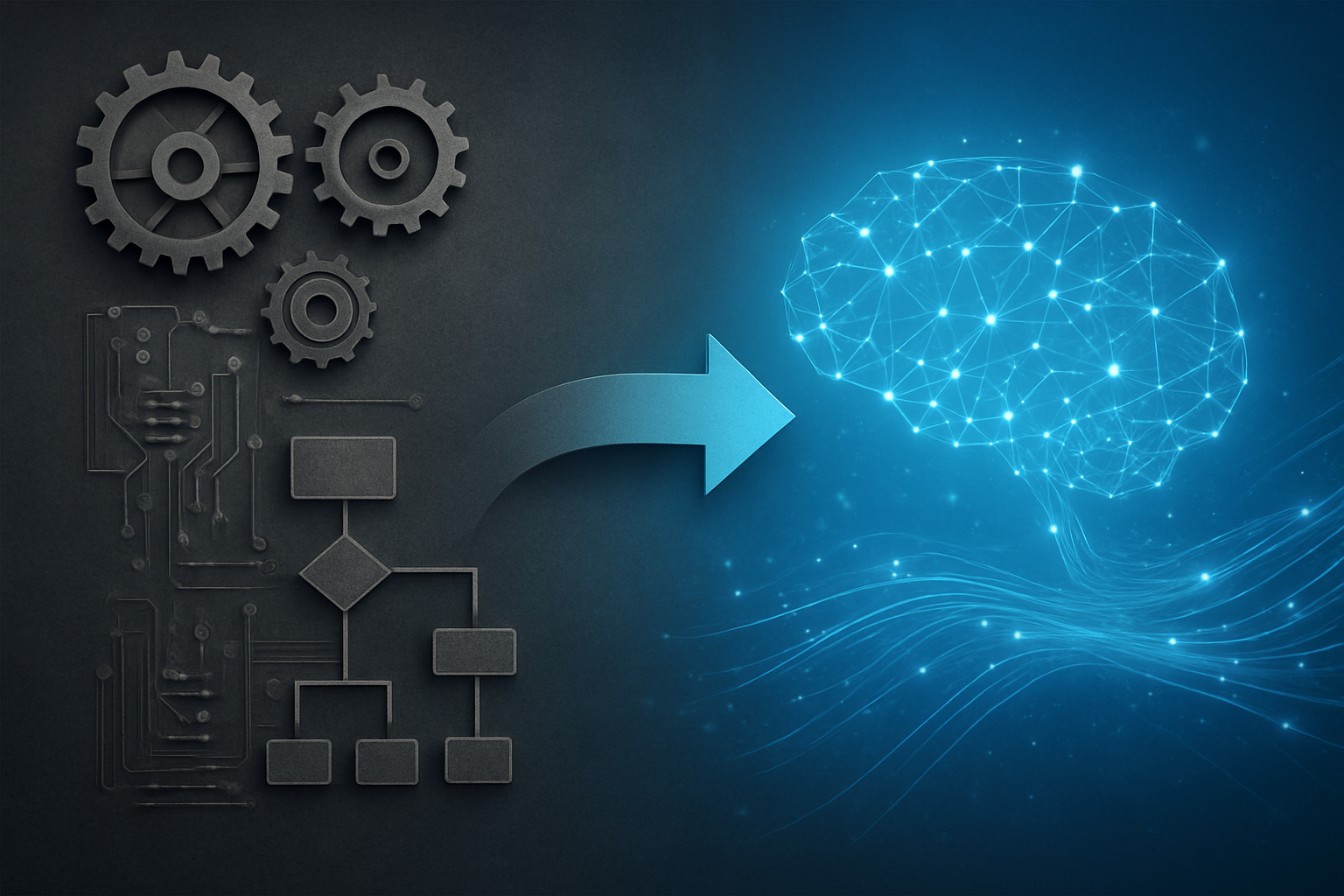
Rule-Based AI Systems That Only Followed Human Instructions
The journey of artificial intelligence began with remarkably simple systems that operated purely on predetermined rules and explicit human programming. These early AI systems, emerging in the 1950s and 1960s, functioned as sophisticated calculators that could only execute tasks within their rigidly defined parameters. Unlike today’s revolutionary AI tool capabilities, these systems required exhaustive programming for every possible scenario they might encounter.
During this foundational period, computing machines essentially functioned as large-scale calculators, with organizations like NASA often relying on human “computers” – teams of women tasked with solving complex mathematical equations for rocket trajectory calculations. The concept of intelligent decision-making was still purely theoretical, as these early systems lacked any ability to adapt or learn from experience.
Notable examples from this era include the 1914 chess-playing machine “El Ajedrecista” by Leonardo Torres y Quevedo, which could only play a simple chess endgame using electromagnets, and the 1966 ELIZA chatbot created by MIT’s Joseph Weizenbaum. ELIZA operated by following basic rules to rephrase user statements into questions, simulating therapy sessions through simple pattern matching rather than genuine understanding. Despite its rudimentary nature, many users believed they were conversing with a human professional, demonstrating the power of even basic rule-following systems.
These early artificial intelligence capabilities were characterized by their inability to operate beyond their programmed instructions. They represented deterministic systems where every input had a predetermined output, lacking the flexibility that would later define more advanced AI decision making technologies.
Machine Learning Revolution That Enabled Autonomous Data Analysis
The transition from rigid rule-based systems to machine learning marked a revolutionary turning point in AI development. This transformation began gaining momentum in the 1950s and 1960s, fundamentally changing how machines could process and learn from data without explicit programming for every scenario.
Arthur Samuel pioneered this revolutionary AI tool approach in 1959 with a program that improved at checkers through experience rather than following predetermined rules. This represented the first practical demonstration of a machine’s ability to enhance its performance autonomously, laying the groundwork for modern intelligent automation tools.
The introduction of neural networks further accelerated this revolution. Warren McCulloch and Walter Pitts published foundational work on artificial neural networks in 1943, while Marvin Minsky and Dean Edmunds built the first artificial neural network, SNARC, in 1951, which simulated learning through reinforcement. Frank Rosenblatt’s development of the Perceptron in 1957 created an early neural network capable of pattern recognition, marking a significant advancement in autonomous data analysis capabilities.
Machine learning systems demonstrated their potential through various breakthrough applications:
- IBM Watson (2011): Processed vast amounts of data from encyclopedias and the internet to compete on Jeopardy, showcasing natural language processing capabilities
- Statistical methods: The 1988 IBM T.J. Watson research demonstrated language translation using probabilistic methods with 2.2 million sentence pairs
- Pattern recognition: Yann LeCun’s application of backpropagation in 1989 to recognize handwritten digits pioneered deep learning applications
These developments represented a fundamental shift from static rule-following to dynamic learning systems that could analyze data patterns and make autonomous decisions based on their training, setting the stage for more sophisticated AI capabilities.
Deep Learning Neural Networks That Mimic Human Brain Processing
The evolution toward deep learning neural networks represents the most significant advancement in creating artificial intelligence capabilities that mirror human cognitive processes. This revolutionary AI tool approach fundamentally transformed how machines process information, moving from simple pattern matching to sophisticated analysis that resembles human brain processing.
Geoffrey Hinton’s groundbreaking work in deep learning became foundational to modern AI decision making systems. Beginning his exploration of neural networks during his 1970s PhD studies, Hinton’s research culminated in the 2012 ImageNet competition, where he and his graduate students demonstrated unprecedented advances in neural network capabilities. His work on deep learning processes enabled AI systems to learn from vast amounts of data and make accurate predictions, becoming essential to natural language processing and speech recognition technologies.
The architecture of these deep learning systems involves multiple layers of interconnected nodes that process information hierarchically, similar to how the human brain processes complex information through neural pathways. Key milestones in this evolution include:
| Year | Development | Impact |
|---|---|---|
| 1986 | Rumelhart, Hinton, Williams publish backpropagation algorithms | Enabled deep learning neural networks |
| 1997 | LSTM neural networks introduced | Advanced sequence processing capabilities |
| 2006 | Geoffrey Hinton’s deep learning breakthroughs | Revolutionized neural network applications |
| 2012 | CNNs like AlexNet achieve image recognition breakthroughs | Transformed computer vision |
Modern deep learning neural networks demonstrate remarkable capabilities in mimicking human-like processing. GPT-3, released in 2020 with 175 billion parameters, represents a pinnacle of this technology, capable of generating human-like text and engaging in sophisticated conversations. This system processes information through multiple layers of neural connections, analyzing context, relationships, and patterns in ways that closely resemble human cognitive processes.
The revolutionary advancement from basic rule-following to intelligent decision-making through deep learning has enabled AI systems to perform complex tasks including creative content generation, autonomous problem-solving, and sophisticated pattern recognition that rivals human capabilities.
Creative AI Capabilities That Transform Art and Content Creation

Generative AI That Creates Original Art, Music, and Literature
Revolutionary AI tools have fundamentally transformed the creative landscape, enabling machines to produce original works of art, music, and literature with unprecedented sophistication. Generative artificial intelligence systems can now create visual masterpieces, compose symphonies, and write compelling narratives that challenge traditional notions of human creativity. These creative AI technologies utilize complex algorithms and neural networks to analyze vast datasets of existing works, learning patterns, styles, and techniques that they then synthesize into entirely new creations.
The scope of generative AI’s creative capabilities extends across multiple artistic domains. In visual arts, AI systems can generate paintings that range from photorealistic portraits to abstract compositions, often incorporating various artistic styles and techniques. Musicians and composers are increasingly collaborating with AI systems that can compose melodies, harmonies, and complete musical arrangements across genres from classical to contemporary electronic music. Literary applications include AI systems capable of writing poetry, short stories, novels, and even screenplays that demonstrate coherent narrative structures and engaging storytelling.
What sets these creative AI capabilities apart is their ability to produce truly original content rather than simply remixing existing works. Through sophisticated machine learning processes, these systems develop an understanding of creative principles, aesthetic values, and artistic conventions that enable them to generate works that are both novel and meaningful. The technology has evolved from producing basic pattern-matching outputs to creating complex, nuanced works that can evoke emotional responses and demonstrate artistic merit.
AI-Generated Artwork Selling for Hundreds of Thousands at Auctions
The commercial art world has witnessed a seismic shift as AI-generated artworks begin commanding substantial prices at prestigious auction houses. This phenomenon represents a critical validation of artificial intelligence as a legitimate creative force within the traditional art market. High-profile sales have demonstrated that collectors and art enthusiasts are willing to invest significant sums in works produced through human-AI collaboration, marking a pivotal moment in the acceptance of AI-created art.
Research from the creative AI field reveals fascinating insights into how audiences perceive and value AI-generated art. While synthetic visual art created through generative artificial intelligence is becoming increasingly sophisticated, the revelation that AI was involved in the creative process significantly impacts both artwork valuation and artist perception. Studies indicate that co-created art—where artists collaborate with AI systems—tends to receive lower valuations from audiences, particularly when AI is used in the implementation stages of artistic creation rather than merely for initial idea generation.
The art market’s response to AI-generated works reveals complex dynamics around authenticity and creative value. Despite being perceived as more innovative, AI-assisted artworks are often viewed as less authentic and labor-intensive, which directly affects their market reception. Authenticity emerges as the primary factor influencing why co-created art receives lower valuations from audiences, highlighting the ongoing tension between technological innovation and traditional artistic values.
However, the commercial art market shows more acceptance of AI-generated works in certain contexts. Art created for commercial purposes, such as stock images and illustrations, experiences less adverse effects from AI involvement compared to works considered “high art.” This distinction suggests that market acceptance of AI-generated art varies significantly based on the intended purpose and cultural positioning of the artwork.
Creative Problem-Solving Beyond Traditional Computing Tasks
Generative AI’s creative problem-solving capabilities extend far beyond conventional computing applications, demonstrating artificial intelligence’s capacity for innovative thinking and novel solution generation. These systems excel at tackling complex creative challenges that require not just computational power but genuine creative insight and artistic sensibility. Unlike traditional computing tasks that follow predetermined algorithms, creative AI engages in open-ended problem-solving that mirrors human creative processes.
The technology’s ability to approach creative problems from multiple angles simultaneously represents a fundamental advancement in intelligent automation tools. AI systems can now analyze creative challenges, consider various aesthetic and functional constraints, and generate solutions that balance artistic vision with practical requirements. This capability proves particularly valuable in design fields where creative solutions must satisfy both aesthetic and functional criteria.
Creative AI’s problem-solving approach incorporates sophisticated understanding of context, style, and audience preferences. The systems can adapt their creative output based on specific parameters while maintaining artistic coherence and innovative edge. This flexibility enables AI to serve as a powerful collaborative partner for human creators, offering fresh perspectives and unexpected solutions that might not emerge through traditional creative processes alone.
The implications of AI’s creative problem-solving capabilities extend beyond individual artistic projects to broader applications in design thinking and innovation. Organizations increasingly recognize that AI can contribute meaningfully to creative processes, offering new methodologies for approaching complex creative challenges. This represents a significant evolution in how we conceptualize the relationship between technology and creativity, positioning AI not merely as a tool but as an active creative collaborator capable of genuine innovation and artistic contribution.
Natural Communication Breakthrough That Makes AI Accessible

Conversational AI That Understands Context and Emotion
Revolutionary AI tool capabilities have fundamentally transformed how we interact with machines through natural language processing. Conversational artificial intelligence represents a groundbreaking achievement that combines natural language processing with machine learning to create systems that can understand, interpret, and respond to human communication in remarkably sophisticated ways.
At its core, conversational AI utilizes large volumes of data and advanced machine learning algorithms to help imitate human interactions, recognizing both speech and text inputs while translating their meanings across various languages. This artificial intelligence capabilities breakthrough involves a complex four-step process that enables machines to process human communication naturally.
The input generation phase allows users to communicate through voice or text via websites and applications. During input analysis, the system employs natural language understanding (NLU) to decipher meaning and derive user intention from text-based inputs, while speech-based inputs leverage automatic speech recognition (ASR) combined with NLU for comprehensive analysis.
What makes this technology truly revolutionary is its dialogue management system, where Natural Language Generation (NLG) formulates appropriate responses. The reinforcement learning component continuously refines these responses over time, ensuring increasing accuracy through machine learning algorithms that create a constant feedback loop for improvement.
The emotional intelligence aspect represents a significant advancement in AI decision making. While traditional chatbots followed rigid scripts, modern conversational AI can interpret context, understand nuanced communication, and even recognize emotional undertones in user interactions. However, emotions, tone, and sarcasm still present challenges for conversational AI systems when interpreting intended user meaning and responding appropriately.
Voice Assistants That Became Part of Daily Life
Now that we have covered the foundational technology, voice assistants have revolutionized how households interact with technology daily. Most households now have at least one Internet of Things (IoT) device that utilizes automated speech recognition to interact with end users, fundamentally changing the landscape of intelligent automation tools.
Popular applications like Amazon Alexa, Apple Siri, and Google Home have become integral parts of daily routines, demonstrating how revolutionary AI tool technology can seamlessly integrate into personal and professional environments. These voice assistants utilize sophisticated natural language processing to understand commands, answer questions, control smart home devices, and provide personalized assistance.
The accessibility benefits of voice assistants cannot be overstated. Companies have become more accessible by reducing entry barriers, particularly for users who require assistive technologies. Text-to-speech dictation and language translation features have made technology more inclusive, allowing individuals with various disabilities to interact with digital systems more effectively.
Beyond personal use, voice assistants have transformed business operations across multiple sectors. In healthcare, conversational AI makes services more accessible and affordable for patients while improving operational efficiency and streamlining administrative processes like claim processing. Human resources departments leverage these tools to optimize employee training, onboarding processes, and updating employee information.
Chat Applications That Provide Companionship and Support
Previously, customer support relied heavily on human agents, but chat applications have evolved to provide both functional assistance and emotional support. Online chatbots are replacing human agents along the customer journey, answering frequently asked questions around topics like shipping while providing personalized advice, cross-selling products, and suggesting appropriate options for users.
This transformation extends across various platforms, including messaging bots on e-commerce sites with virtual agents, messaging apps such as Slack and Facebook Messenger, and tasks traditionally handled by virtual assistants. The comprehensive nature of these applications demonstrates the versatility of artificial intelligence capabilities in addressing diverse user needs.
The companionship aspect of chat applications represents a significant advancement in human-AI collaboration. These systems provide 24-hour availability, offering immediate support that allows customers to avoid long call center wait times, leading to substantial improvements in overall customer experience. As customer satisfaction grows, companies see positive impacts reflected in increased customer loyalty and additional revenue from referrals.
Cost efficiency remains a primary driver for adoption, as staffing customer service departments can be costly, especially for providing support outside regular office hours. Conversational AI provides a cost-efficient solution by reducing business costs around salaries and training, particularly beneficial for small- and medium-sized companies.
The scalability of chat applications makes them particularly valuable during unexpected demand spikes or geographical expansion. Adding infrastructure to support conversational AI proves cheaper and faster than hiring and onboarding new employees, making it an ideal solution for businesses experiencing growth or seasonal fluctuations.
With this in mind, personalization features within conversational AI provide chatbots with the ability to offer recommendations to end users, allowing businesses to cross-sell products that customers may not have initially considered, thereby enhancing both user experience and business outcomes.
Autonomous AI Agents That Work Independently
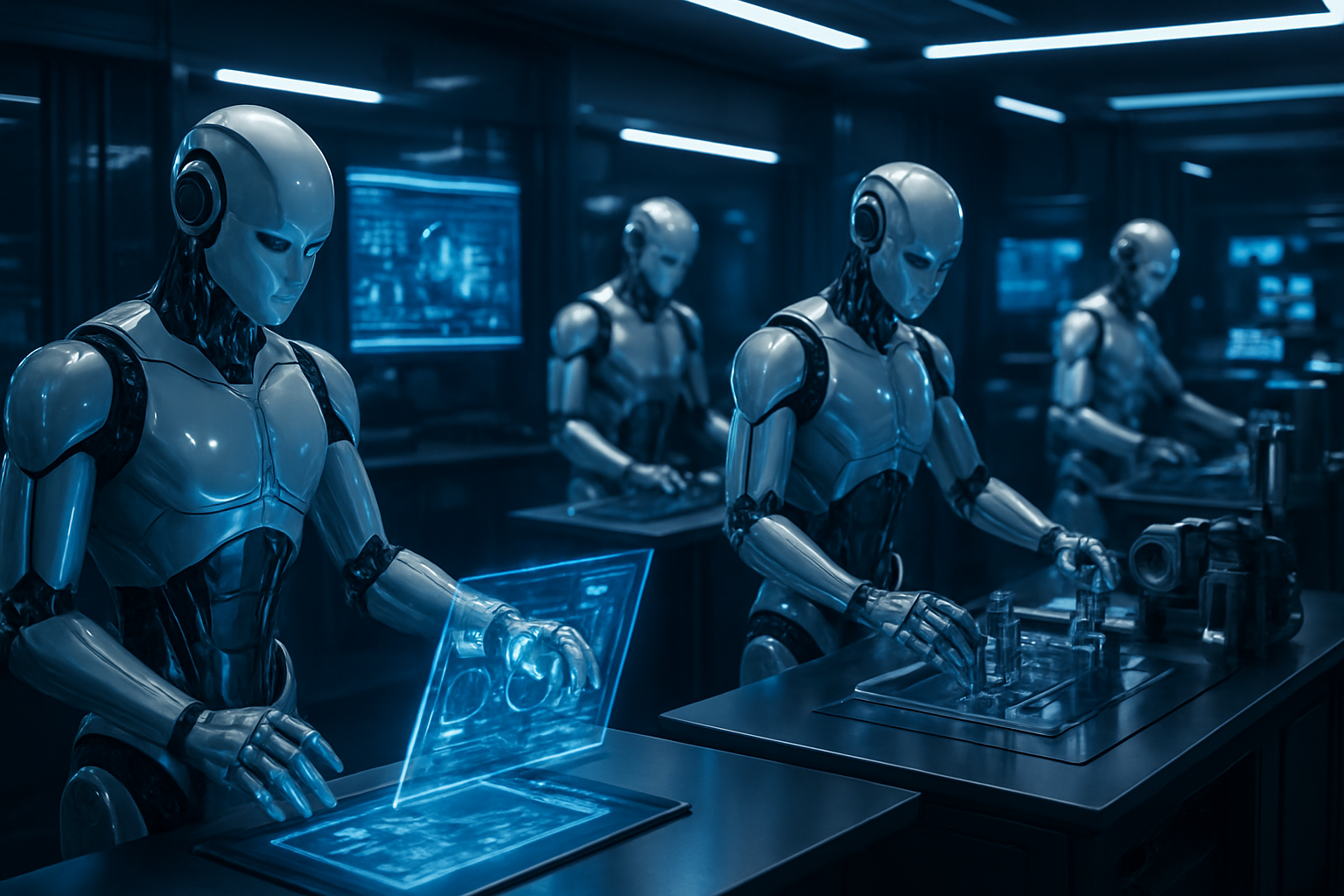
Agentic AI That Sets Goals and Executes Tasks Without Commands
The leap from predictive AI to autonomous, reasoning AI agents marks a transformational shift in intelligent automation tools. Unlike traditional AI systems that require explicit instructions for every task, agentic AI operates with remarkable independence, setting its own goals and executing complex workflows without constant human supervision.
This revolutionary AI tool capability stems from advanced multi-step reasoning and decision trees that enable agents to plan, analyze multiple variables, and predict long-term outcomes. Rather than providing simple input-output responses, these autonomous AI agents think strategically about task completion. For instance, a supply chain AI agent doesn’t just match vendor prices—it evaluates historical delays, regulatory risks, and alternative routes before making comprehensive recommendations.
Memory-augmented architectures form the foundation of this autonomous behavior. These systems incorporate both short-term memory for temporary contextual information and long-term memory for persistent knowledge storage. This dual-memory system allows agents to build deeper understanding over time, enabling context-aware responses and evolving strategies that improve accuracy without human intervention.
The swarm intelligence model represents another breakthrough in agentic AI capabilities. Instead of relying on a single AI to handle everything, multiple specialized agents collaborate autonomously. In fraud detection scenarios, one agent identifies suspicious transactions, another cross-references past patterns, and a third recommends risk-mitigation strategies—all without human commands. This decentralized reasoning allows for higher accuracy, better adaptability, and truly autonomous decision-making.
Self-Learning Systems That Train Themselves Through Trial and Error
Now that we’ve explored how agents set goals independently, the next revolutionary capability involves self-learning systems that continuously improve through reinforcement learning and trial-and-error processes. These systems represent a fundamental departure from traditional AI that remains static after deployment.
Self-learning AI agents keep watching what’s happening, learn from the results, and change how they work based on what’s effective. Unlike conventional automation that follows the same fixed steps from day one to day 1,000, these intelligent automation tools spot patterns, learn from mistakes, and get better over time—similar to how experienced employees gain knowledge and efficiency.
Constitutional AI represents a cutting-edge approach where agents review and improve their own work based on clear guidelines while maintaining alignment with human feedback and company values. This self-evaluation capability enables agents to refine their strategies autonomously while respecting organizational constraints.
The technical architecture supporting this learning involves sophisticated evaluation frameworks that track performance through multiple dimensions. Real-time performance analytics provide continuous feedback for every task execution, enabling rapid adaptation to changing conditions and preventing the performance drift common in static AI systems.
Graph-based learning structures enable dynamic path optimization, where agents experiment with different execution paths and propose new reasoning patterns when encountering edge cases. This continuous optimization occurs during normal operations, not just during dedicated training periods, resulting in 60-80% reduction in human intervention requirements within the first month of deployment.
Digital Assistants That Anticipate Needs and Follow Up Automatically
Previously, we’ve seen how AI agents learn and adapt—now let’s examine how they proactively anticipate user needs and follow through automatically. This represents the pinnacle of autonomous AI agents capabilities, where systems move beyond reactive responses to predictive assistance.
Memory-enabled AI architectures allow digital assistants to understand context and user preferences over extended periods. A banking AI assistant remembers customer preferences, suggests tailored financial products, and detects emotional cues in interactions—all while continuously improving its understanding of individual user needs.
These advanced digital assistants operate through sophisticated anticipatory algorithms that analyze patterns in user behavior, environmental changes, and historical data to predict future requirements. Rather than waiting for explicit requests, they proactively identify opportunities to provide value and take action within their defined parameters.
The follow-up automation capabilities distinguish these systems from traditional chatbots or static automation tools. An AI compliance agent autonomously monitors transactions for regulatory violations, flags inconsistencies in real-time, and suggests corrections—all without human prompting. These agents maintain persistent awareness of ongoing processes and automatically check back on initiated actions to ensure completion.
Enterprise knowledge management showcases this anticipatory capability in action. AI agents autonomously retrieve, analyze, and synthesize company-wide knowledge, contextually understanding user queries before they’re fully articulated. They pull relevant data from documents, emails, and databases while continuously improving their knowledge base through feedback and refinement.
This anticipatory intelligence extends to research and analytical tasks, where agents extract insights from vast datasets, generate reports, and execute complex analytical workflows autonomously. The combination of predictive awareness and automated follow-through creates a seamless user experience where needs are met before they become pressing requirements.
Physical World Integration Through Robotic Intelligence
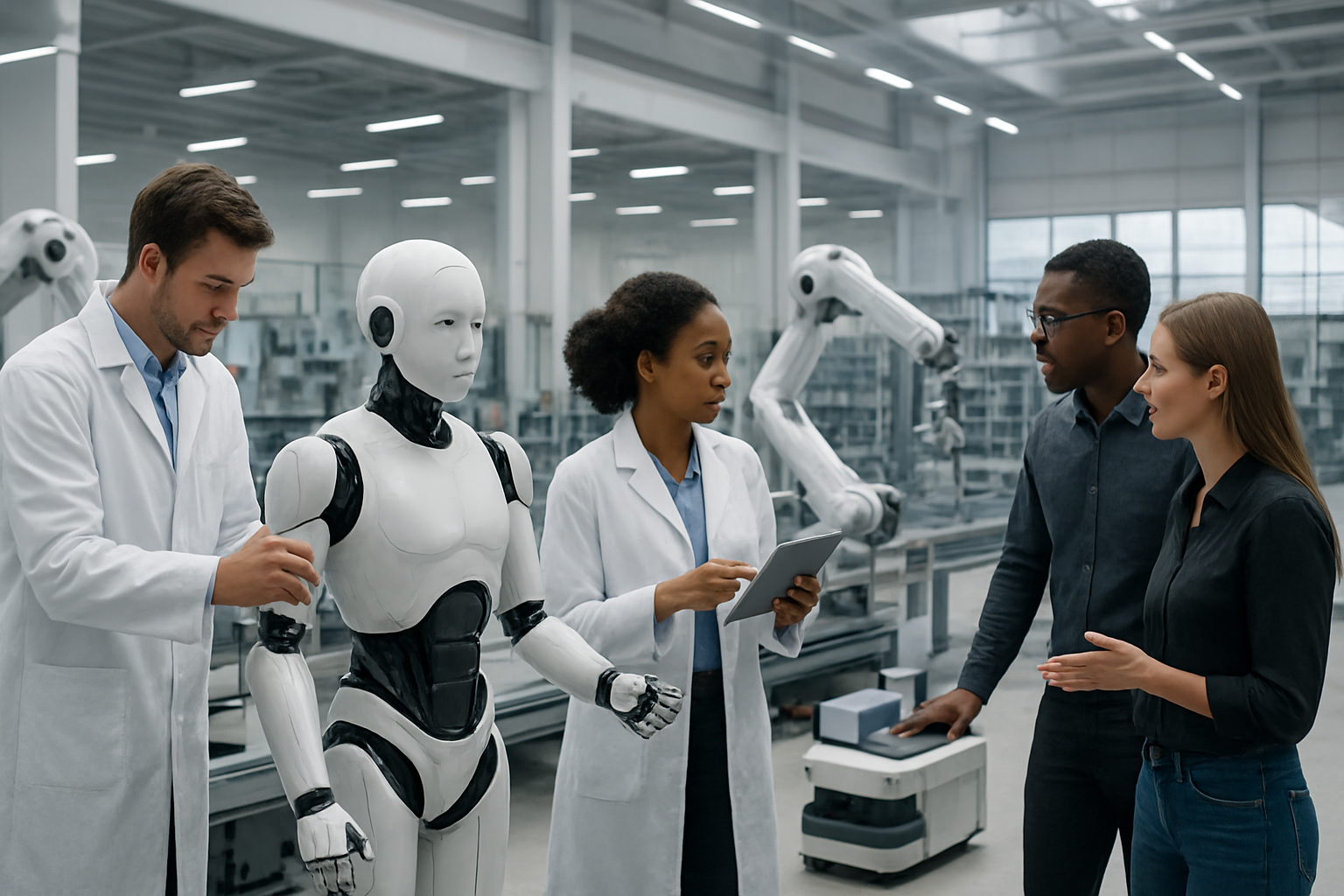
Embodied AI in Advanced Humanoid Robots Like Boston Dynamics Atlas
Physical world integration through AI robotics integration represents a revolutionary leap from traditional digital intelligence to machines that can genuinely interact with their environment. Embodied AI encapsulates all aspects of interacting and learning in an environment: from perception and understanding to reasoning, planning, and execution. Unlike traditional AI models that often operate in abstract, virtual environments, this revolutionary AI tool emphasizes the importance of physical presence and interaction.
Advanced humanoid robots demonstrate five core principles that make them truly remarkable. First, their interaction with the physical world allows them to gather real-time data and adapt to changing conditions – crucial for learning and decision-making. A robotic arm designed to assemble components must physically manipulate objects to understand their properties and optimal handling techniques.
Second, perception and action coupling creates seamless integration where robots don’t just see obstacles but immediately decide how to navigate around them. This coupling enables more adaptive and responsive behaviors in real-time situations. Third, learning through experience allows these systems to evolve through trial and error, refining actions based on environmental feedback. A robot learning to walk must attempt various movements, receiving feedback on balance and coordination, subsequently adjusting its gait.
Fourth, contextual understanding enables robots to operate within specific environments, making decisions informed by their surroundings. Finally, multimodal sensory integration utilizes vision, touch, and sound to gather comprehensive environmental information, enhancing their ability to perceive and interact more effectively.
Team NimbRo from the University of Bonn exemplifies this advancement, recently winning the grand prize at the ANA Avatar XPRIZE competition, securing five million US dollars for their robotic avatar system. Their humanoid soccer-playing robots demonstrated exceptional skills at the RoboCup World Championship, utilizing advanced software for real-time visual perception and agile movement while maintaining balance and optimizing kicking movements.
AI-Powered Surgical Robots Enhancing Medical Precision
Now that we have covered the foundational principles of embodied intelligence, AI-powered surgical robots represent one of the most critical applications of this revolutionary AI tool in healthcare. These systems integrate multiple fields including computer vision, environment modeling, prediction, planning, control, and physics-based simulation to achieve unprecedented precision in medical procedures.
The integration of artificial intelligence capabilities into surgical robotics creates systems that can improve their behavior from experience, enabling them to adapt and respond effectively to real-world surgical challenges. Unlike traditional surgical tools, AI-powered surgical robots utilize the same multimodal sensory integration principles, combining visual data with tactile feedback to manipulate surgical instruments with extraordinary precision.
These intelligent automation tools demonstrate contextual understanding by recognizing specific anatomical structures and adjusting their approach accordingly. The perception and action coupling principle becomes particularly vital in surgical applications, where robots must process visual information and immediately translate it into precise movements without delay.
The learning through experience aspect of embodied AI in surgical robotics allows these systems to refine their techniques based on feedback from successful procedures. This continuous improvement capability represents a significant advancement in medical technology, where precision and adaptability can directly impact patient outcomes.
Warehouse Automation Addressing Labor Shortages
With this advancement in medical applications established, warehouse automation demonstrates how AI robotics integration addresses critical labor shortages while revolutionizing logistics operations. The evoBOT robot platform developed at Fraunhofer IML exemplifies the capabilities of embodied AI in logistics environments, designed for dynamic locomotion and capable of navigating uneven surfaces without external counterweights.
The modular design of advanced warehouse robots allows for various functionalities, including transporting objects and assisting humans in collaborative tasks. Utilizing Guided Reinforcement Learning, these systems can learn to balance and adapt their movements, enhancing flexibility in logistics applications. This represents a practical application of the revolutionary AI tool that demonstrates relevance beyond theoretical interest.
According to the World Robotics 2024 report from the International Federation of Robotics, the global stock of industrial robots reached 4.28 million units in 2023, representing a 10% increase over the previous year. Annual installations exceeded 500,000 units for the third year in a row, with 541,000 new robots deployed, reflecting growing demand for intelligent, autonomous systems that can navigate unstructured environments.
Companies like PAL Robotics have been at the forefront of embodied intelligence for more than twenty years, developing mobile and humanoid robots for research, industrial, and service environments. Their platforms, including TIAGo Pro and KANGAROO Pro, are deployed across logistics automation, supporting manufacturing tasks and enabling advanced manipulation research.
These warehouse automation systems demonstrate all five core principles of embodied AI: they interact with the physical warehouse environment, couple perception with immediate action decisions, learn through operational experience, understand the contextual layout of facilities, and integrate multiple sensory inputs to navigate complex warehouse scenarios effectively.
Human-AI Collaboration That Enhances Rather Than Replaces Work

Hollywood Studios Using AI for Scriptwriting and Video Production
The entertainment industry exemplifies how human AI collaboration transforms creative workflows without replacing human creativity. Revolutionary AI tools now assist screenwriters and producers in developing compelling narratives while maintaining the essential human touch that audiences connect with. Studios leverage artificial intelligence capabilities to analyze script patterns, suggest plot developments, and identify potential audience engagement points, allowing writers to focus on character development and emotional storytelling.
This collaborative approach demonstrates that work in the future will be a partnership between people, agents, and robots—all powered by AI. Writers retain creative control while AI handles data-intensive tasks like market analysis, genre trend identification, and dialogue optimization. The technology processes vast amounts of successful screenplay data to provide insights that enhance human creativity rather than supplant it.
Video production workflows have similarly evolved through intelligent automation tools that streamline technical processes. AI assists with preliminary editing, color correction suggestions, and continuity checking, freeing human editors to concentrate on artistic vision and narrative flow. This partnership exemplifies how most human skills will endure, though they will be applied differently in the evolving entertainment landscape.
Medical AI Assisting Surgeons with Real-Time Analysis and Feedback
Healthcare represents one of the most critical areas where human-AI collaboration enhances professional capabilities without compromising human expertise. Medical professionals increasingly work alongside AI systems that provide real-time diagnostic support, surgical guidance, and patient monitoring insights. This partnership demonstrates how more than 70 percent of the skills sought by employers today are used in both automatable and non-automatable work.
Surgeons benefit from AI-powered analysis that processes medical imaging, monitors patient vitals, and suggests optimal surgical approaches based on comprehensive database comparisons. However, the human element remains irreplaceable in making final decisions, adapting to unexpected situations, and providing patient care that requires empathy and nuanced judgment.
The demand for AI fluency—the ability to use and manage AI tools—has grown sevenfold in two years, particularly evident in medical settings where professionals must integrate these revolutionary AI tools into their practice. Medical AI collaboration showcases how technology augments human expertise rather than replacing the irreplaceable skills of medical professionals.
Educational AI Tutors That Adapt to Individual Student Learning Pace
Educational institutions demonstrate exceptional human AI collaboration through personalized learning systems that adapt to individual student needs. AI tutors work alongside human educators to provide customized instruction, identify learning gaps, and adjust teaching methodologies based on student progress patterns. This partnership illustrates how artificial intelligence capabilities can enhance educational outcomes while preserving the essential human connection in learning.
The collaboration allows teachers to focus on mentoring, emotional support, and complex problem-solving guidance while AI handles repetitive tasks like progress tracking, assignment grading, and basic concept reinforcement. This distribution of responsibilities shows how human skills will endure, though they will be applied differently in educational environments.
Educational AI systems process learning data to identify optimal study schedules, suggest relevant resources, and provide immediate feedback on student work. Meanwhile, human educators concentrate on developing critical thinking skills, fostering creativity, and providing the social-emotional learning that technology cannot replicate.
This collaborative model demonstrates that by 2030, about $2.9 trillion of economic value could be unlocked in the United States—if organizations prepare their people and redesign workflows around people, agents, and robots working together. The educational sector serves as a prime example of how revolutionary AI tools enhance rather than replace human capabilities, creating more effective learning environments that benefit both educators and students.
Future Potential of Artificial General Intelligence

AGI as the Ultimate Goal of Human-Level Reasoning Across All Tasks
Previously, we’ve explored how current AI systems excel in specific domains, but artificial general intelligence represents the revolutionary AI tool that would match or surpass human capabilities across virtually all cognitive tasks. Unlike artificial narrow intelligence (ANI), whose competence is confined to well-defined tasks, an AGI system can generalize knowledge, transfer skills between domains, and solve novel problems without task-specific reprogramming.
Creating AGI has become a primary goal of major AI research organizations and companies such as OpenAI, Google, xAI, and Meta. Mark Zuckerberg’s new goal at Meta is to create smarter-than-humans AGI, while OpenAI’s charter explicitly includes “planning for AGI and beyond.” A 2020 survey identified 72 active AGI research and development projects across 37 countries, demonstrating the global commitment to this revolutionary AI technology.
The concept of AGI doesn’t necessarily require the system to be an autonomous agent. A static model—such as a highly capable large language model—or an embodied robot could both satisfy the definition, provided human-level breadth and proficiency are achieved. Google DeepMind researchers proposed a framework classifying AGI by performance levels: emerging, competent, expert, virtuoso, and superhuman. For example, a competent AGI outperforms 50% of skilled adults in a wide range of non-physical tasks, while a superhuman AGI outperforms 100%.
Several tests have been developed to confirm human-level AGI achievement, including the Turing test, Robot College Student Test, Employment Test, and various practical challenges like the Ikea test and Coffee test. Modern AI systems are already showing promising results, with GPT-4 identified as human 54% of the time in randomized Turing tests, though still falling short of humans at 67%.
Revolutionary Impact on Science, Medicine, and Education
Now that we understand AGI’s fundamental capabilities, the revolutionary impact on critical human domains becomes apparent. AGI’s potential benefits span advancements in medicine, science, environmental conservation, space exploration, education, and the economy. In medicine, AI already outperforms human doctors at diagnosis in some cases, suggesting that AGI could revolutionize healthcare by providing instant, comprehensive medical expertise accessible to anyone.
The collapse of traditional expertise structures represents one of the most significant transformations. When any motivated person can gain AI-assisted mastery in hours through AGI systems, the traditional “expert class” faces obsolescence. The next generation won’t defer to credentialed experts but will consult AGI systems that theoretically know everything and forget nothing.
In scientific research, AGI promises to accelerate discovery by processing vast amounts of data, identifying patterns humans might miss, and generating novel hypotheses at unprecedented speeds. Problems deemed “AI-complete” or “AI-hard”—such as computer vision, natural language understanding, and dealing with unexpected circumstances—will become solvable, opening new frontiers in scientific exploration.
Educational transformation will be equally profound as AGI enables personalized learning experiences. Future generations will grow up with AI, talking with avatars, learning through interactive models, and organizing their lives alongside digital assistants. This deep integration means human thinking will evolve with constant augmentation, potentially rewiring what being human means in the learning process.
Potential to Rewrite Civilization Rules and Human Progress
With this revolutionary foundation established, AGI’s potential extends to fundamentally rewriting the rules governing human civilization. The movement from scarcity to abundance represents a paradigm shift that challenges our current economic, social, and political structures. AGI will vaporize scarcity in many domains—communication, translation, design, photography, and education—services that once required human labor will become nearly free.
This transformation creates what futurists call the rise of the “global brain”—a collective consciousness across the entire planet. Instant translation and frictionless access to all information will make humanity function like a connected neural network, fundamentally changing how we organize society and make collective decisions.
The timeline for achieving human-level artificial intelligence remains contested, with recent surveys of AI researchers giving median forecasts ranging from the late 2020s to mid-century. Some experts predict AGI as soon as 2027, while others extend timelines beyond 2100. Current predictions average around 2040, with notable figures like Jensen Huang expecting AI to pass any human test within five years.
However, this massive transition poses significant challenges. Our economies, religions, and governments all assume scarcity, mortality, and human superiority—assumptions that may not survive contact with AGI. The real risk may be societal collapse during the handoff from human to hybrid civilization, as existing institutions struggle to adapt to post-scarcity, superintelligent systems.
The debate around AGI’s development reflects these concerns, with some advocating for cautious development and global cooperation to mitigate risks, while others worry about “human economic obsolescence and disempowerment, losses of freedom, civil liberties, dignity, and control.” Despite varied opinions, the consensus among researchers is that AGI represents a transformative force that will fundamentally alter human civilization’s trajectory.
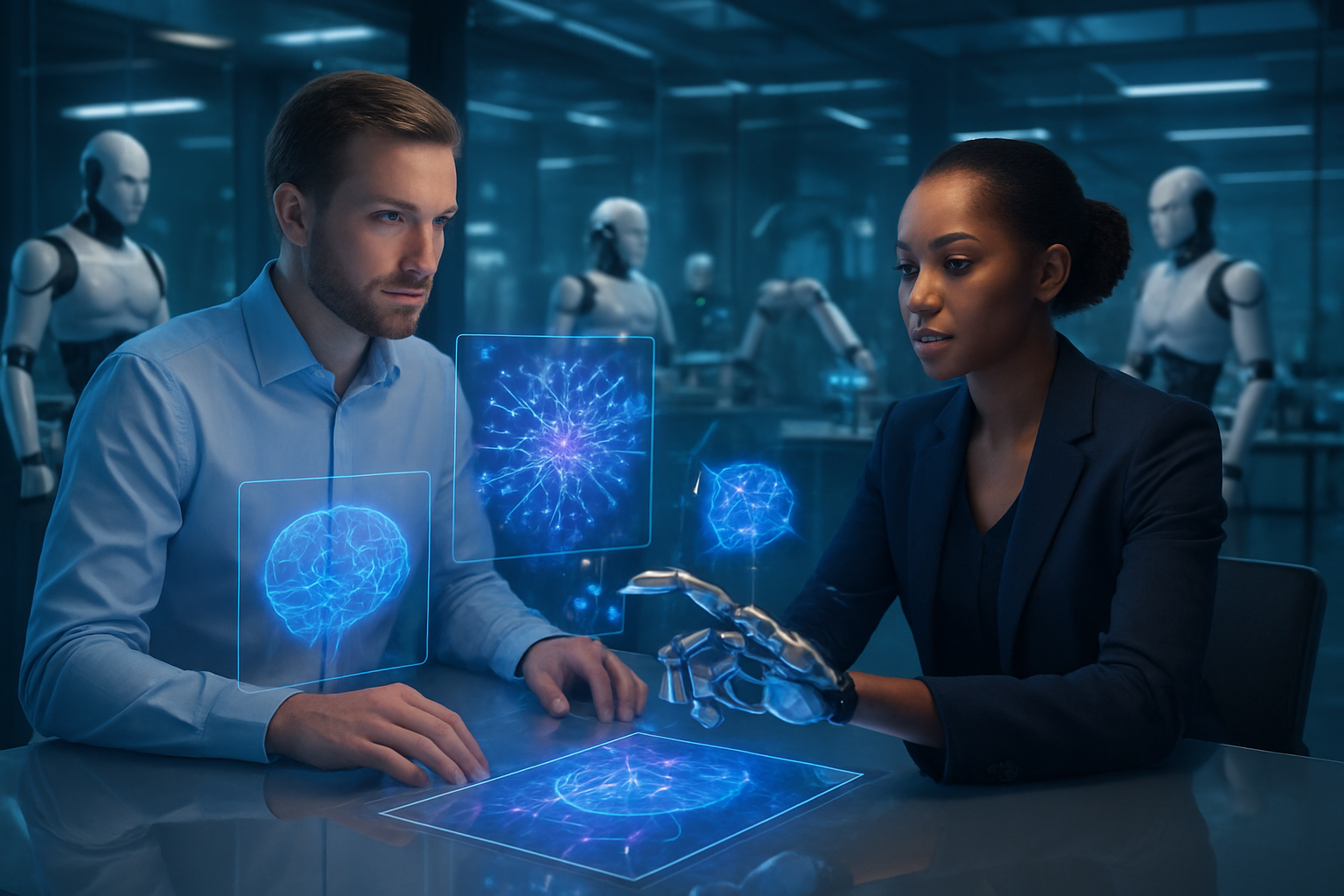
The evolution from basic rule-following systems to today’s revolutionary AI tools represents one of humanity’s most remarkable technological achievements. We’ve witnessed AI transform from rigid, obedient calculators into creative powerhouses that paint masterpieces, write compelling content, and engage in natural conversations. The emergence of autonomous agents working independently, combined with physical world integration through advanced robotics, has fundamentally changed how we interact with intelligent machines.
What makes this AI revolution truly extraordinary is its focus on human-AI collaboration rather than replacement. From Hollywood studios using AI to enhance scriptwriting to surgeons receiving real-time surgical guidance, these tools are amplifying human capabilities in unprecedented ways. As we stand on the brink of Artificial General Intelligence, the potential for even greater breakthroughs looms ahead. The question isn’t whether AI will continue to revolutionize our world – it’s how prepared we are to embrace and shape this transformation alongside our increasingly intelligent digital partners.
